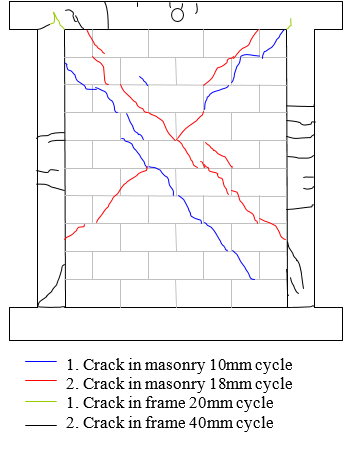W. Jäger1 and P. Schöps2
- Professor, Chair of Structural Design, Faculty of Architecture, Technische Universität Dresden, Lehrstuhl.Tragwerksplanung@mailbox.tu-dresden.de
- Research Assistant, Faculty of Architecture, Technische Universität Dresden, Peter.Schoeps@mailbox.tu-dresden.de
ABSTRACT
With the introduction of the semiprobabilistic safety concept with partial factors for masonry design in Germany an increase of the horizontal action due to wind- and seismic loads is connected (s. 1). This fact was overlaid by the reduction of the number and area of stiffening walls from the point of view of economy as well as by lowering the bulk density to achieve a higher thermal insulation. The latter leads to a reduction of the available strength of the units also. Therefore considerable research efforts have been made in Germany to compensate the losses of bearing capacity and to guarantee the competitiveness of masonry with other building materials (s. 2 – 6). Confined masonry is an adequate alternative – besides the execution as reinforced masonry – in order to increase the design resistance. It has until now found only a low application in Germany. That’s why it was taken into account in the efforts to increase the load bearing capacity of stiffening walls by the research project presented in the following.
Due to the encapsulation of a masonry wall with a reinforced concrete frame the behaviour under horizontal actions improves considerably in case of confined masonry. As part of a research project cyclic tests performed on walls made of autoclave aerated concrete units encased by a
reinforced concrete framework will be presented below. Parallel to the large scale wall tests a detailed determination of the material parameters for the purpose of a numerical modelling was done. The simulation shows in detail the forces in the wall and the interaction between masonry and the reinforced concrete frame. Finally a proposal for the efficient design is presented. A comparison with conventional masonry shows especially for small loads a significant gain of shear load capacity. Even the ductility, which is particularly important for earthquake design, is significantly higher than for common stiffening walls. But the difference in erection compared to infill masonry is low. The confined masonry leads to a much better connection between masonry and concrete frame and thus the extra vertical loads, which are very important for masonry, can be activated. The association of masonry and concrete leads to stable and affordable buildings.
In the following interesting test results with confined masonry will be presented and discussed. They show some reserves in the interpretation and application of load-bearing reserves could be use in the future.
KEYWORDS: confined masonry, cyclic shear tests, effect of shrinkage, numerical simulation
A8-3



